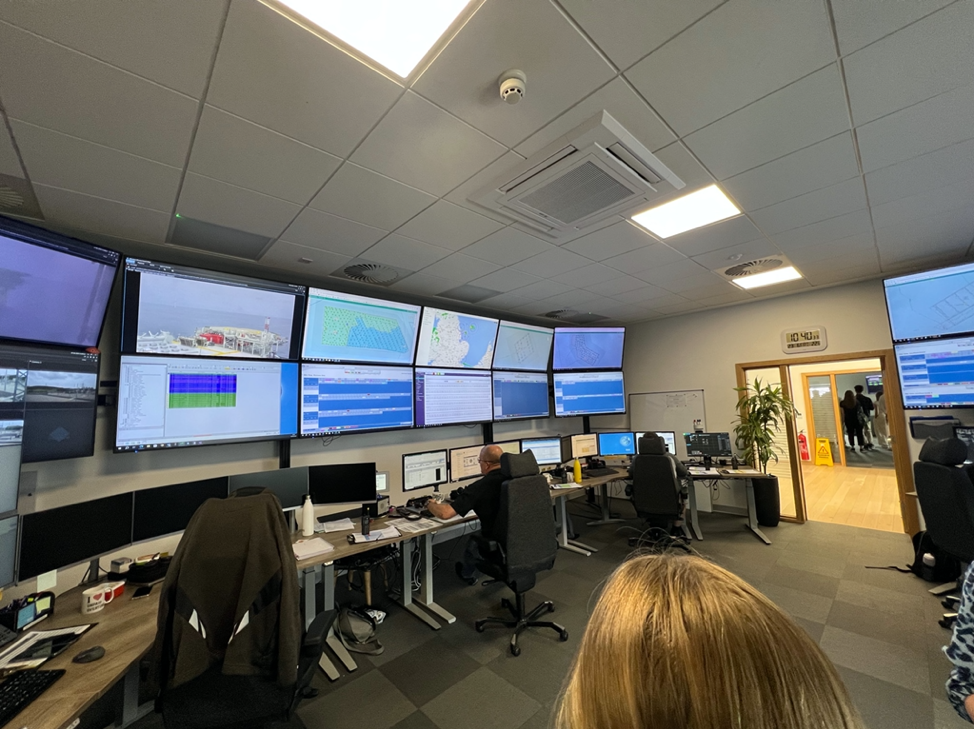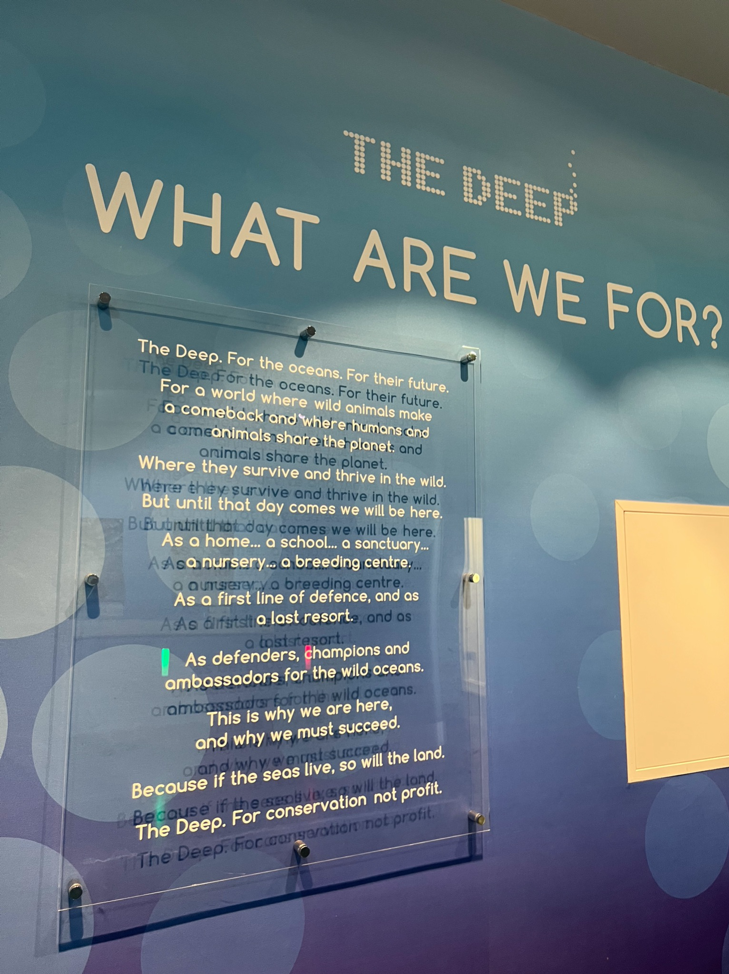Ørsted: Sustainable Energy and the Leader in Offshore Wind
July 14, 2023
The Burch Fellowship Students second day in Hull started with an early morning wake-up call to be out and ready for our bus ride to Ørsted. After our hour bus ride, we arrived at the port of Grimsby to see Ørsted’s East Coast Hub, the world’s largest offshore wind operations and maintenance center.
Ørsted doesn’t have a traditional history compared to other large-scale renewable energy companies. Ørsted, formerly known as DONG Energy, was one of Europe’s most coal-intensive companies. Today, they are one of the world’s most sustainable energy companies and the leader in offshore wind. Ørsted is home to the world’s largest wind farms and has 13 operational offshore wind farms that they own or partly own, one wind farm under construction, and a further three being developed. They have over 1,000 offshore wind turbines installed, which produce 6.2GW which is enough energy to power over 7 million UK homes a year.
Ørsted is a great inspiration for how energy-intensive companies can transform their entire business model while pursuing a definition of a responsible business. We see the role of businesses changing as their values shift and they begin to accept their social responsibility. Pursuing social value creation may ultimately lead to more profits than pursuing profits directly.
Businesses have a responsibility that extends beyond meeting the needs of customers. Sustainability in the business world means ensuring current and future customers’ environmental, economic, and social well-being. From Ørsted’s East Coast Hub, they power 28% of UK households and have directly invested 45 million into the local community into education and skills development. This is imperative as Grimsby was previously one of the largest fishing ports in the world; however, they experienced the effects of post-industrial decline and had their economy plummet. However, the town has had a new life with the offshore wind industry, transforming Grimsby into sustainable, green growth and creating thousands of new jobs. These jobs are long-term, highly skilled jobs and put money back into the hands of local communities.
We could tour the East Coast Hub and see first-hand the control room where they monitor their wind farms in the UK and worldwide. Here, you can see if any wind turbines need to be repaired, in what condition they are in, and if any emergency protocols need to be administered. It was astounding to see controllers talk live-time to the ships at the wind turbines and see first-hand how the operations work day-to-day with the ships.
We took our bus back to Hull and used our afternoon to tour the Wilberforce House Museum. This house was the birthplace of William Wilberforce, the leader of the movement to abolish the slave trade, and is known as the ‘father’ of the British abolitionist movement. The museum told the story of the transatlantic slave trade and its abolition and dealing with contemporary slavery.
I spent the rest of our afternoon on a solo trip visiting The Deep Aquarium in Hull, where they focus on conservation and climate change. Walking into this aquarium, I was surprised it was more museum styled, focusing on how the world and oceans were formed and the pollution and extreme climate change it is facing now. This aquarium was an idealistic example of how to educate our kids on protecting our oceans and the result of ocean acidification directly hurting our biodiversity.

We boarded an evening train back to London where we are able to play cards and cherish our time with our classmates as the trip is coming close to an end. We were back in London before dark to wind down and reflect on our event-filled day. We saw how it is possible to achieve a green transformation with Ørsted demonstrating in building a net-zero world.
About the Author
This article was written by: Sarah Rogers, ‘25, Environmental Studies and Business, Connect on LinkedIn.
